On the 50th anniversary of his Triple Crown, why Secretariat still resonates today
- Oops!Something went wrong.Please try again later.
Over the past five decades, talented racehorses have come and gone, their brilliance lighting up the sky for a moment in time, only to fade and all but disappear from our memory.
Except for Secretariat.
In this the 50-year anniversary of his historic Triple Crown, the name Secretariat remains etched in stone as a once-in-a-lifetime phenomenon. Even now, he is almost as popular as ever, the name Secretariat being easily the first Thoroughbred racehorse that comes to the mind of race fans and non-race fans alike.
Put it this way: Baseball has its Babe Ruth. Boxing has its Muhammad Ali. Soccer has its Pele. Football has its Jim Brown. Horse racing has its Secretariat.
Why is that?
“He accomplished one of the greatest feats in sports history,” said Tom Hammond, the Lexington native who was the longtime on-air host of NBC Sports’ coverage of the Triple Crown.
“I think most of us consider him to be the greatest racehorse we’ve ever seen in our lifetime, and by a wide margin,” said veteran racing writer Bill Finley, who has covered the sport for the New York Daily News, New York Post and New York Times and now writes for Thoroughbred Daily News.
True, but Secretariat’s enduring popularity goes deeper than that.
“I think the country was looking for a hero at that time,” said Claiborne Farm’s Seth Hancock, who as a 25-year-old led the syndication of Secretariat’s breeding rights for a then-record $6 million. “We were coming out of the Vietnam War and the country was not in a great place. Everybody was looking for something or somebody to look up to. And he just happened to come along.
“And of course he was a big, glamorous son of a gun and then when he had the kind of talent that he showed in the Triple Crown, I think that had a lot to do with it.”
“He had charisma,” Hammond said. “He did it with panache. He had flashy colors and he had a regal way about him. And he had his greatest fame at a time when America needed a boost.”
“Either he or Man o’ War are the best Thoroughbreds to have ever raced,” said Maryjean Wall, the Eclipse Award-winning journalist and author who covered horse racing for over 40 years for the Lexington Herald-Leader. “Old-timers talked about Man o’ War then the same way we talk about Secretariat now.”
Man o’ War did not run in the 1920 Kentucky Derby, however. And when Secretariat came along, no horse had accomplished the sport’s toughest challenge in 25 years. In 1948, Citation became the eighth horse to sweep the Kentucky Derby, Preakness and Belmont. With every failed attempt thereafter, there was the question of whether there would ever be another Triple Crown winner.
“A lot of people said it would never be done again,” Hancock said, “and then when he did it and did it in such a smashing fashion. I think it really captured everybody’s imagination.”
“He was on the cover of Time, Newsweek and Sports Illustrated,” Wall said of the famous print publications of the day. “Even if you never went to a racetrack, you had to know who Secretariat was.”
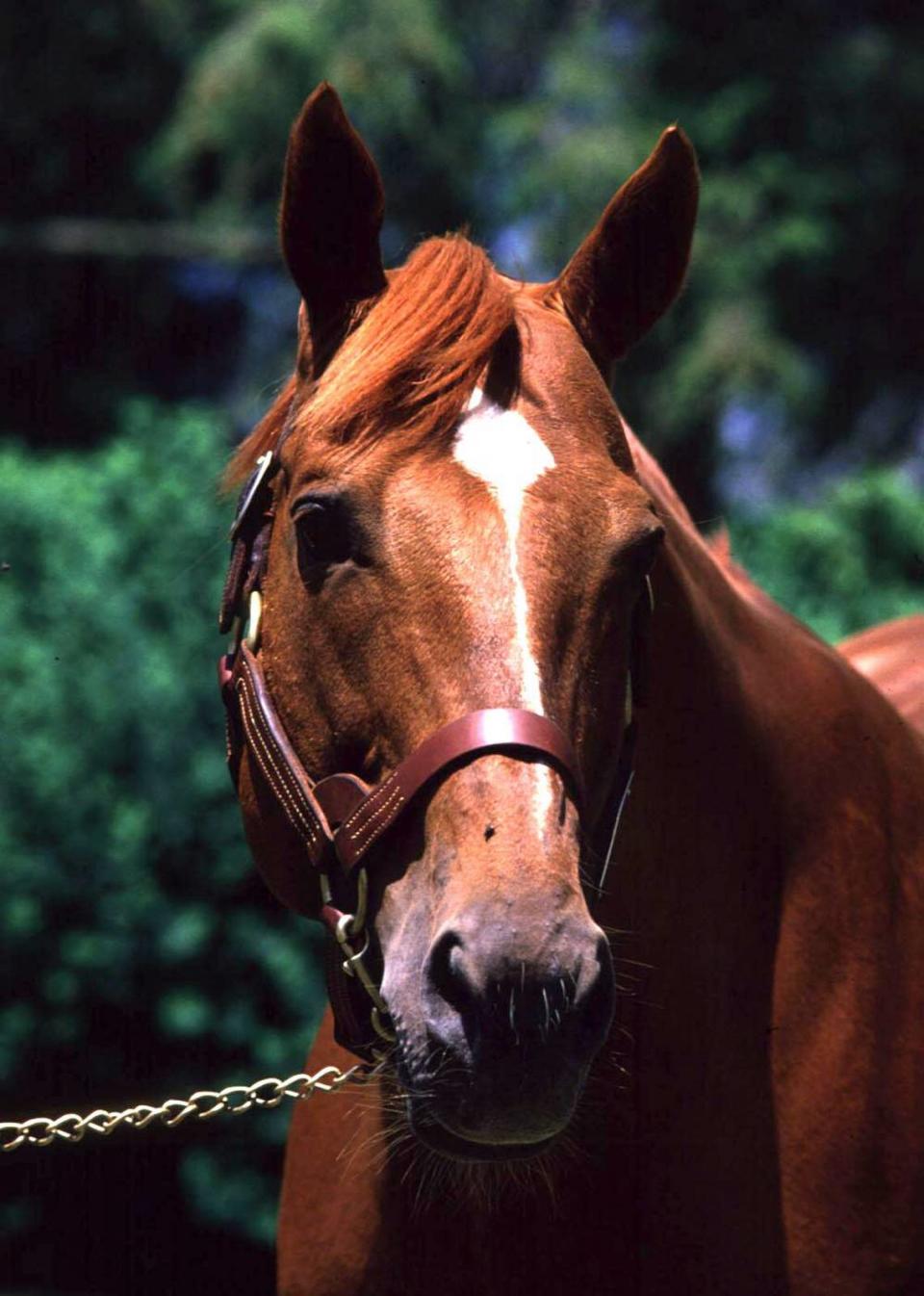
The Coach House and a cocktail napkin
“He was an easy horse to like because Penny was a lovely lady and people really liked her,” Hancock said.
Penny was Penny Chenery. Or Penny Tweedy as she was known at the time, before her divorce from husband John Tweedy. The daughter of Christopher Chenery, she took control of the family’s Meadow Stable after the death of her father and made it her mission to save the farm and racing operation.
Chris Chenery was a longtime friend of Bull Hancock, Seth’s father and the man who built Claiborne Farm into an internationally known breeding establishment before his death in 1972. When Chris Chenery died in January 1973, Seth Hancock attended the funeral — on the advice of his father’s friend and partner William Haggin Perry — and told Penny Tweedy that if he could be of any help, please call.
Six weeks later Penny Tweedy did just that to say she wanted to syndicate Secretariat’s breeding rights.
“She said, ‘Do you think you can handle it?’” Hancock recalled. “And I said, ‘Well, we’re going to have to talk price and some other things.’ We met at the Coach House in Lexington. … And I wrote down the details we had hammered out on the back of a cocktail napkin. I wish the hell I’d kept the thing, but I didn’t.”
That syndication figure, that astounding $6 million in 1973, only added to the intrigue and publicity. The general public had to wonder how could a horse be worth that much money?
Despite how it was portrayed in the “Secretariat” movie, Hancock said the shares were not difficult to sell. Secretariat boasted impeccable breeding. He had won the Eclipse Award for Horse of the Year in 1972 when he won seven of nine races as a 2-year-old.
“My stock line was Secretariat was syndicated for what he’s done, not on what he was going to do,” Hancock said. “People had a lot of loyalty to my father. And I hadn’t made any mistakes yet, so they were willing to give me a chance. I was just a lucky kid who happened to be the son of Bull Hancock, that’s all that was.”
“Seth Hancock, I don’t know if he gets the credit he deserves for all this,” said Kenny Rice, the Lexingtonian who has been a part of NBC Sports’ Triple Crown coverage since 2000. “He did a masterful job. In horse racing terms and managing a farm, he was still a kid, in his early 20s and to have the maturity to be able to market the horse and protect the horse’s name.”
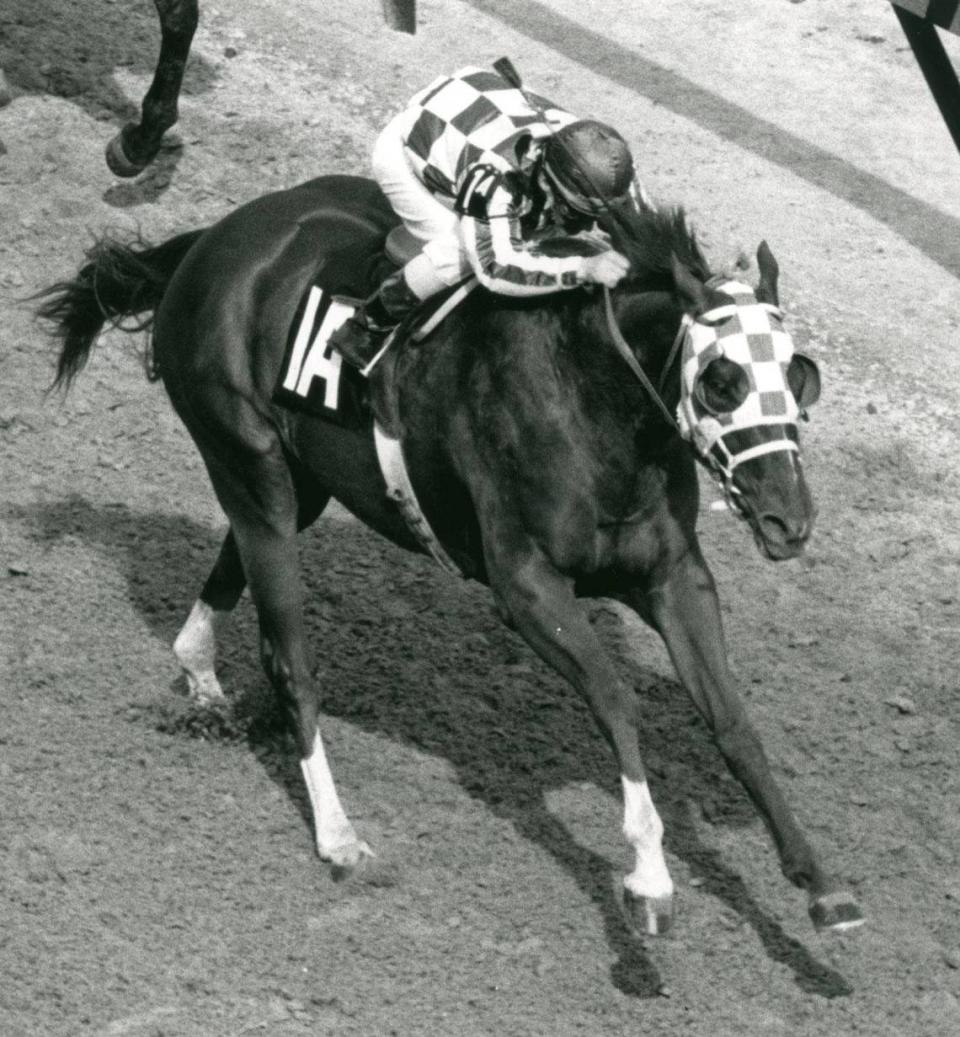
Doubts about Secretariat?
As difficult as it is to believe now, there were plenty of doubters heading into the 1973 Kentucky Derby. Secretariat had finished third in the Wood Memorial, his final prep race. Being a son of Bold Ruler, Secretariat’s endurance was under question. Could he get the Derby distance of a mile-and-a-quarter?
“There was that lingering doubt about offspring of Bold Ruler getting the trip,” Hancock said. “He did it obviously, and then when you looked and saw the time he did it in, it was a big, ‘Wow.’”
“Not only did he win, but he set the record for time (1:59 2/5),” Hammond said. “This is what astounded me, that each quarter mile was faster than the last. That just doesn’t happen in a mile-and-a-quarter race.”
Next came the Preakness, where Secretariat made a spectacular move on the clubhouse turn on the way to the victory, passing his competitors as if they were sitting still. “He went from damn near last to first in the blink of an eye,” Hancock said.
After the win, there was controversy over the winning time. Those with stopwatches claimed Secretariat had gone so fast not even the official timer had clocked him correctly. After 39 years of debate, the Maryland Racing Commission voted unanimously in 2012 to change the official time to 1:53 flat, the time determined by digital technology unavailable in 1973.
“I think that incident too was creating interest,” Wall said. “It was man against machine.”
Finally, last but not least, there was the Belmont Stakes, the grueling mile-and-a-half challenge that has ended many Triple Crown aspirations. Secretariat’s was a legendary Belmont. The Belmont of all Belmonts. There was the unbelievable 31-length winning margin. There was the famous photograph of jockey Ron Turcotte looking back in the stretch to see his competitors off in the distance. There was the legendary call of race announcer Chic Anderson: “Secretariat is widening now. He is moving like a tremendous machine.”
“That is burned into my mind,” Hancock said.
“And you know he got the margin just about right,” said Hammond, who was friends with Anderson. “I don’t know how in the world you would estimate how many lengths, but he did.”
That Secretariat could win the Triple Crown, and do so in record times in all three races — records that stand to this day — and top it off with such a mythical performance only added to the legend.
“That whole intrigue over the Triple Crown — will a horse win that thing again — created an aura,” Wall said. “When he does win it, he must be a winged-creature that he could do this. And now everybody is paying attention to him.”
“We’ve had four Triple Crown winners since then,” Finley said of Seattle Slew in 1977, Affirmed in 1978, American Pharoah in 2015 and Justify in 2018. “None of the four have compared to his.”
As a 12-year-old, Finley witnessed the Belmont in person when his family made the trip to New York from Philadelphia. He remembers that day, without a ticket for a seat, but hanging around in the aisles with a friend he had brought along. They watched in disbelief as Secretariat just kept going faster and faster and faster.
“I think it’s indisputable that was the greatest performance in the history of horse racing by a mile,” Finley said. “I think if you take all the greatest horses who ever lived from Man o’ War on down and had them run the greatest race of their lives, they wouldn’t have beat him that day. They probably wouldn’t have lost by 31 lengths, but I bet they would have lost by 10.”
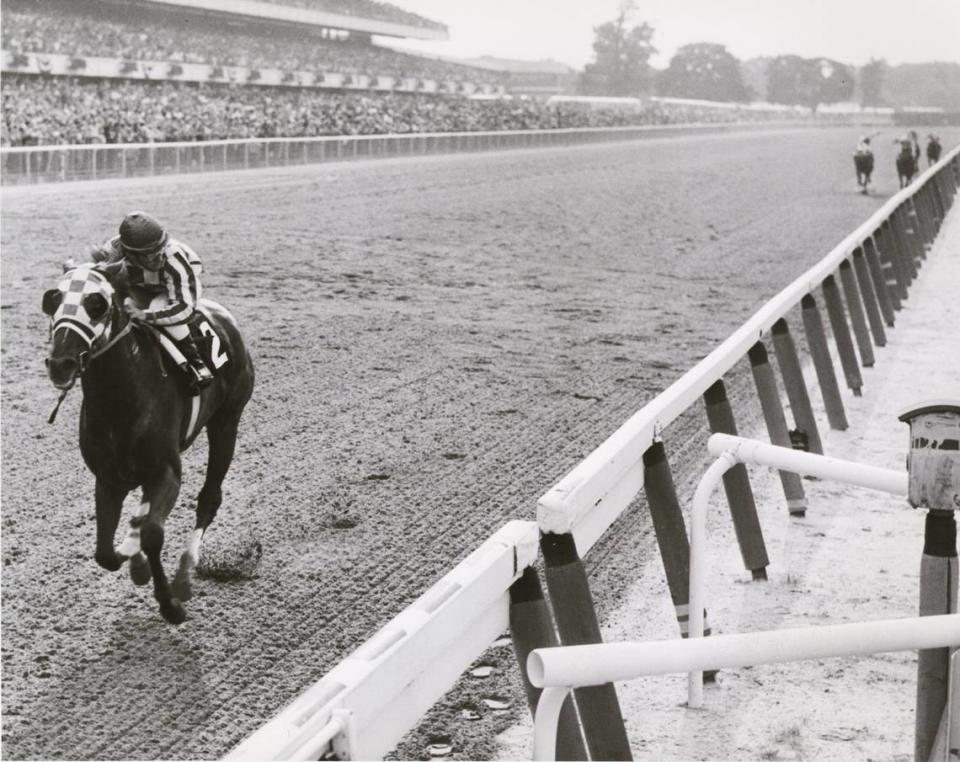
‘A girl from Colorado’
Along the way, there was the figure of Tweedy, a female owner in a sport dominated by rich male owners. That in itself made the story more identifiable and interesting for the general public.
“You think of all the major owners of that era, not only did they come from almost American aristocracy, but they’re all men,” Finley said. “Phipps. Vanderbilt. Mellon. Etc. Here comes this relatively young woman who takes over the stable after her father dies and she’s charismatic, she’s bright, she’s articulate. She didn’t mind going in front of the camera. I think that added to the story.”
“She was a woman at a time when women’s lib was flourishing,” Wall said. “You’ve got Gloria Steinem writing and giving talks. And you’ve got women burning bras. And here comes Penny Tweedy among these wealthy New York men who own racehorses and control the sport.”
“It was different,” said Hammond, who got to know Tweedy when he worked as the announcer at the Keeneland sales. “Here is this lady who apparently has a backbone of steel but does it in a nice way. Gets her way without alienating you. She was good copy. In a man’s world, she handled herself and her horse so well.”
According to Bill Nack’s seminal 1975 book on Secretariat, “Big Red of Meadow Stable,” Tweedy herself once said her story was, “Can a girl from Colorado find success and happiness among the ruthless and powerful men of New York racing?”
Tweedy also both protected and promoted the horse’s legacy. She made every appearance, signed every autograph, many times in appearances with Turcotte. She hired the famous William Morris Agency, a huge public relations firm in New York, to represent the horse. She started a foundation for laminitis research. She remained visible to the public.
“She made sure his legacy was secure,” Wall said. “She wanted him presented in the best way possible. She never disappeared, not to the day she died (in 2017).”
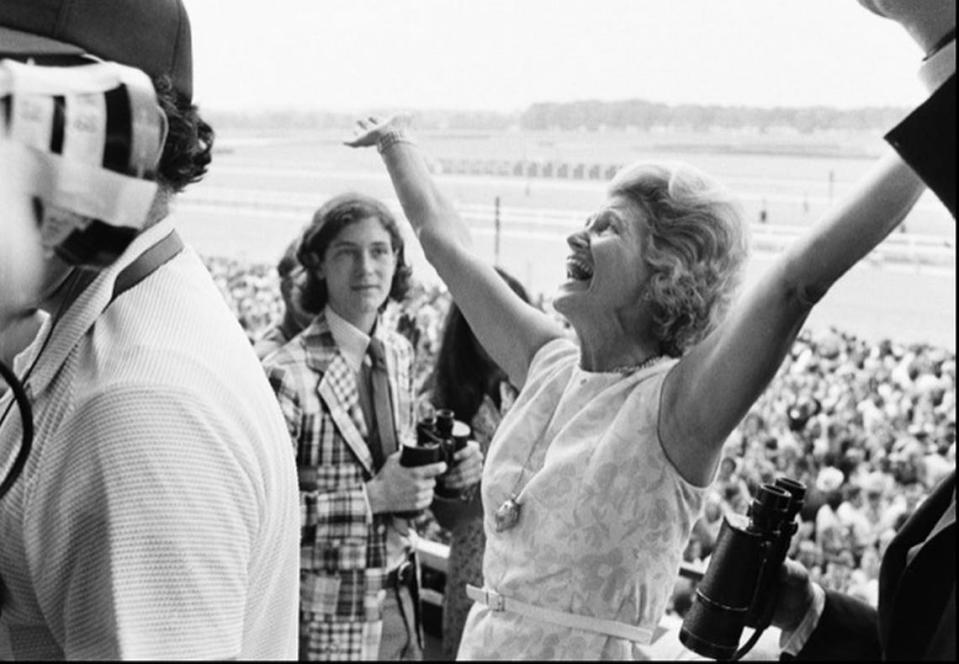
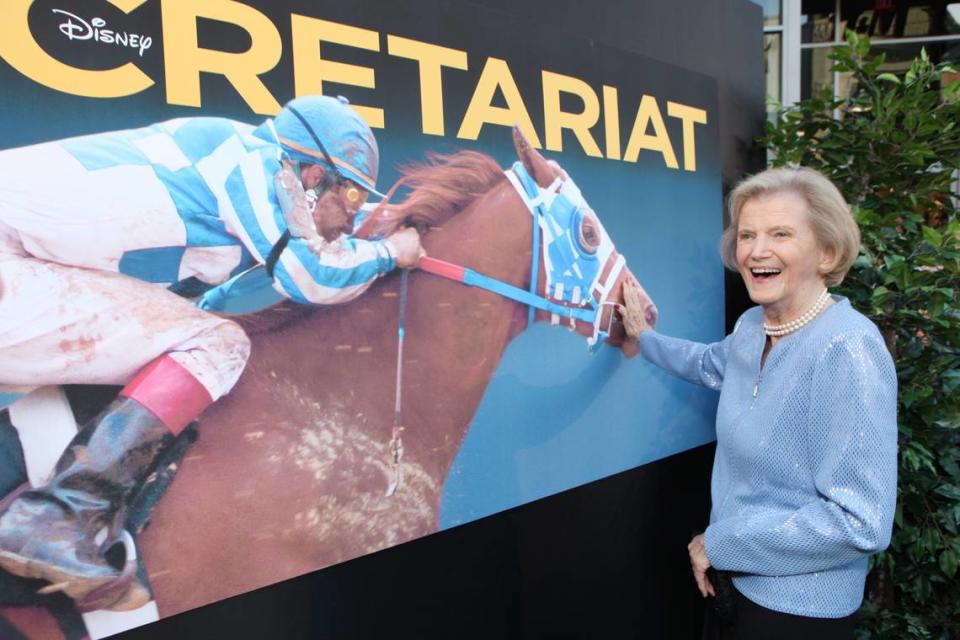
Admired, appreciated ... beloved
Claiborne Farm also played an important role, opening its doors for tourists to come see Secretariat in person, answering letters that were sent to the farm.
Hammond remembers the late Dick Enberg, a sports broadcasting giant who helped mentor Hammond at NBC, asking if he could see Secretariat while in Lexington for a Kentucky basketball game. So Hammond drove Enberg to Claiborne Farm where Hancock joined them.
“We went to Secretariat’s paddock. Seeing us, he trotted over and he always knew he was the star of the show. He was posing regally and looking at us,” Hammond said. “Dick said, ‘How can you tell if a horse is going to be great?’ I said, ‘You can’t tell if he’s going to be great but you can study their pedigree, see how their ancestors have done, see how they’re put together, their conformation.
“And then Seth said, ‘Sometimes you can just see it in their eyes.’ When he said that, Secretariat jerked his head around looked right at Dick Enberg, looked him right in the eye. It was something that Dick never forgot. He always told that story.”
During the country’s bicentennial in 1976, NBC’s “Today Show” did one broadcast from all 50 states. Its broadcast from Kentucky originated from just outside Secretariat’s paddock at Claiborne Farm.
For better or worse, there was also the “Secretariat” movie, released in 2010 and loosely based on Nack’s book. Insiders cringe over the Hollywood inaccuracies and embellishments in the movie — “I couldn’t finish it,” Hammond said — but both in theaters and on cable television and streaming, the movie has introduced younger generations to the story.
“My brother, who never paid attention to horse racing, phoned me and said, ‘We saw this movie about Secretariat.’ He was amazed about this wonderful horse and I’m thinking, ‘He just now discovered this horse that I was around,’” Wall said. “I think the movie had a lot to do with it, why we’re still talking about Secretariat.”
Plus, there is video of Secretariat and his races, something largely unavailable during the time of Man o’ War or Citation. During that 37-year-period without a Triple Crown winner, Secretariat’s accomplishments were shown over and over again. And you can see them now, on social media and YouTube.
It must also be mentioned that this is an animal story. We love our animals, the connection we have with them. “Horses have a way of getting inside of you,” Nack wrote in a reflection of Secretariat for Sports Illustrated.
As such, Secretariat wasn’t just admired or appreciated, he was beloved. Even after Secretariat’s death in 1989 at age 19 because of laminitis, people still ask to see his grave.
Consider this: There are currently six bronze Secretariat statues — two at the Kentucky Horse Park, one at the National Racing Hall of Fame at Saratoga, one at Belmont Park, one at a traffic circle in Lexington and the most recent one, unveiled in Ashland, Virginia, on April 1 to commemorate Secretariat’s birth. A seventh is on the way, to be displayed at a Secretariat Park in Paris, home of Claiborne Farm.
So is anyone surprised that 50 years later we are still talking about Secretariat? Not really.
“It’s a little cliché to throw out the Michael Jordan comparison, but it’s true,” Finley said. “Fifty years from now they’ll be talking about Michael Jordan and his accomplishments the same way they’re talking about Secretariat.”
“It was just a hell of a story,” Hancock said. “But I think the timing of it is why people latched onto him and even to this day still remember it.”
Said Wall, “I think we’re still looking for heroes.”
And we know we might never see another Secretariat.
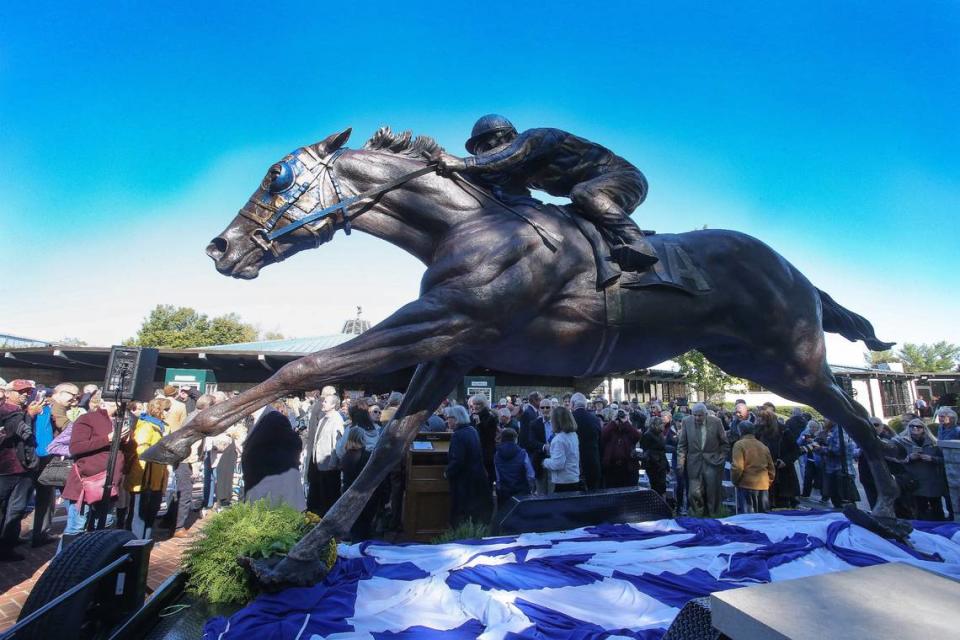
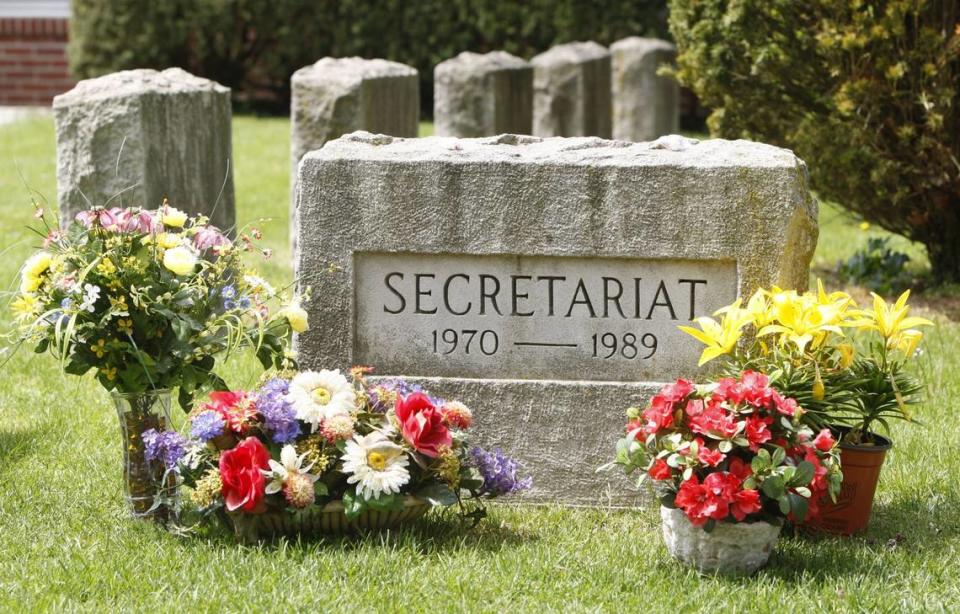
2023 Triple Crown races
May 6: 149th Kentucky Derby at Churchill Downs in Louisville
May 20: 148th Preakness Stakes at Pimlico Race Course in Baltimore, Md.
June 10: 155th Belmont Stakes at Belmont Park in Elmont, N.Y.
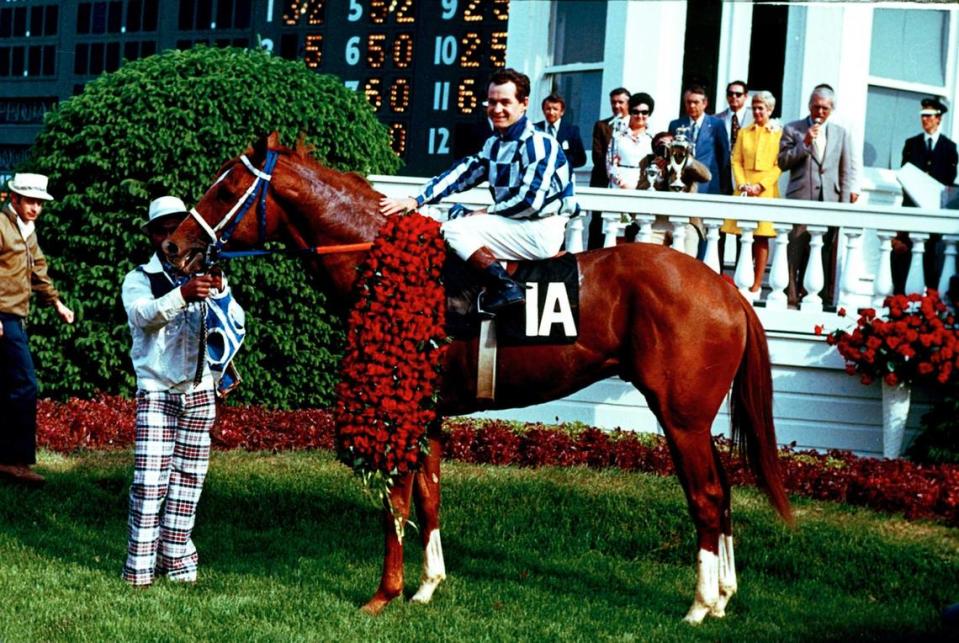
‘People are coming.’ Secretariat’s Paris home honoring him with park, mural and sculpture.
Did Secretariat change the sport of horse racing? See how much is different since 1973.
Is there a potential Triple Crown winner in this year’s Kentucky Derby field?
Get to know the horses who have joined Secretariat in winning the Triple Crown
Watch: Secretariat’s record-setting Triple Crown races still induce chills 50 years later

